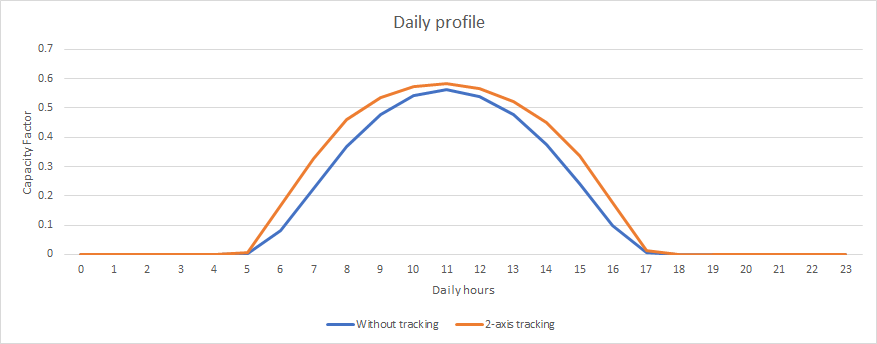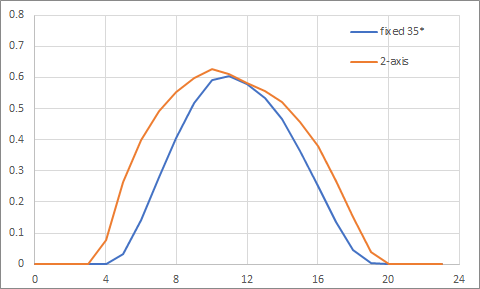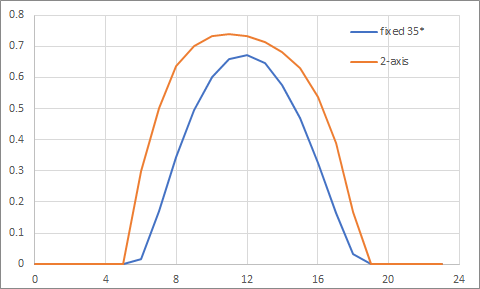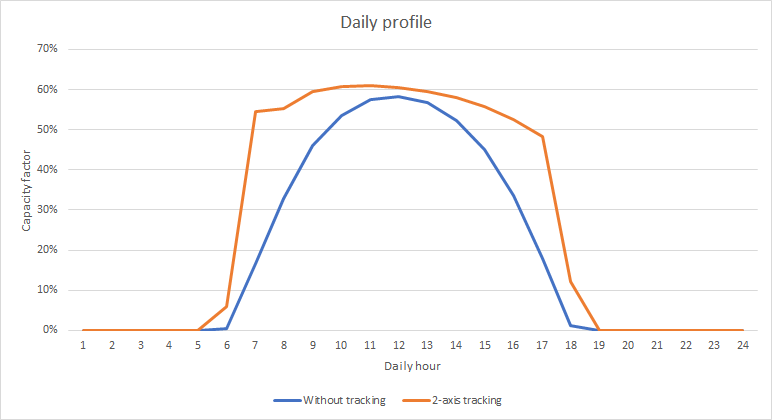Hello guys, I’m facing some problems while trying to running solar PV simulations with 2-axis tracking.
Weirdly, I’m getting the same capacity factor results while running simulations with 2-axis tracking and without tracking (for coordinates LAT : -22,9483 LON : -67,4725 )
In addition, for LAT: 10,3906 LON : -86,6169, the mean capacity factor is, indeed, different. But looking at the daily profile, it looks like the 2-axis tracking profile is not “squared” enough, I mean, it is very similar to the simulation without tracking, and I would expect that the curves were much more different (please, see figure below). All simulations were ran with tilt angle = 0.
Is there any explanation for this?
Thanks in advance,
Taina




